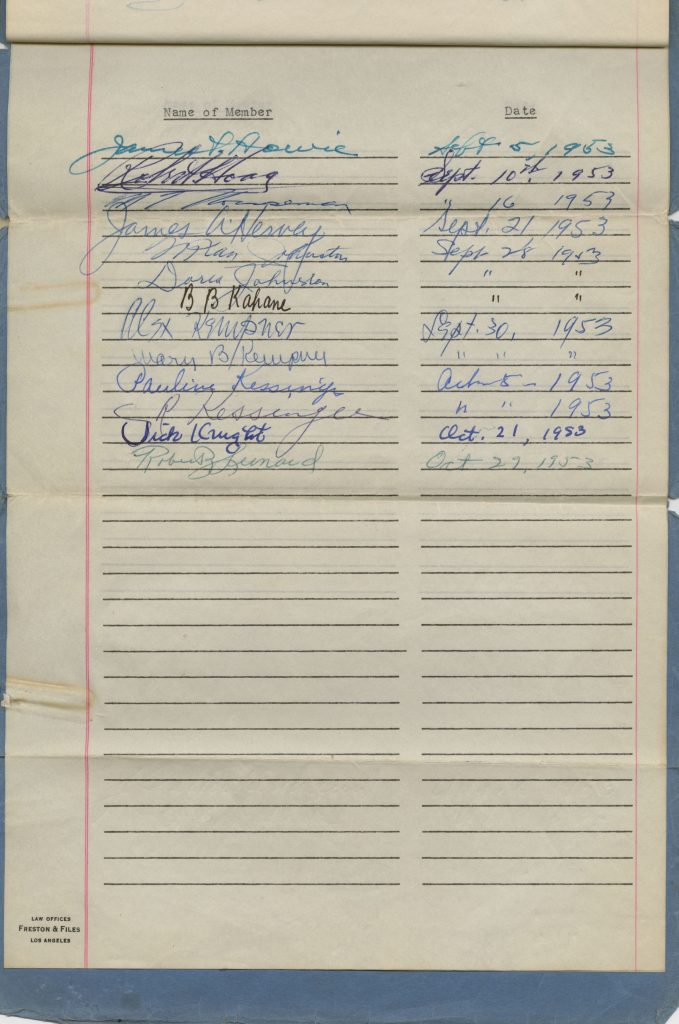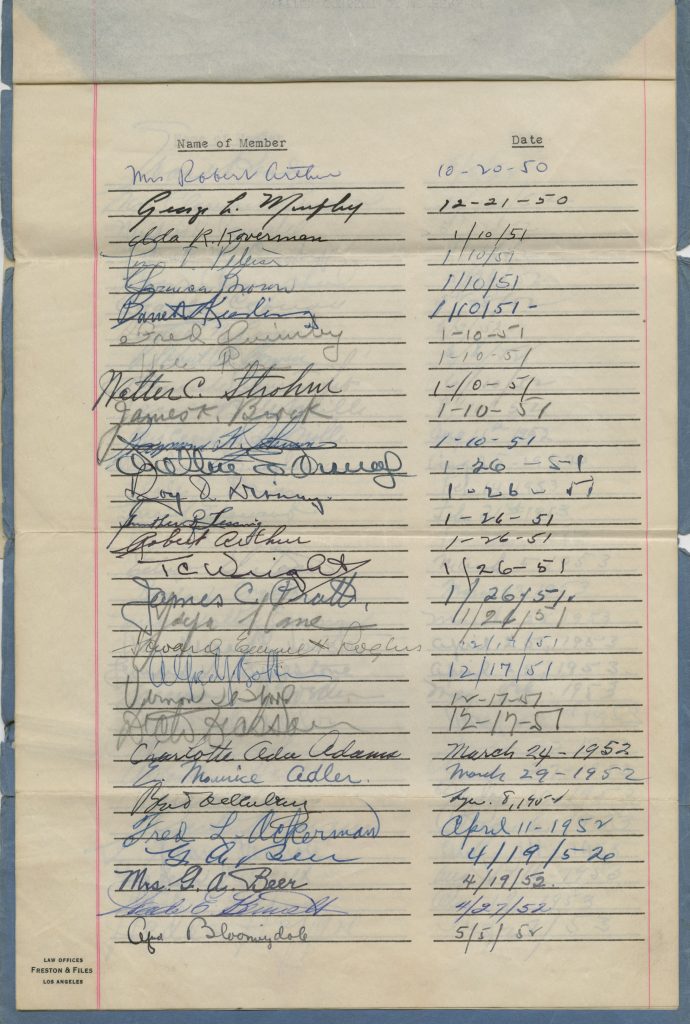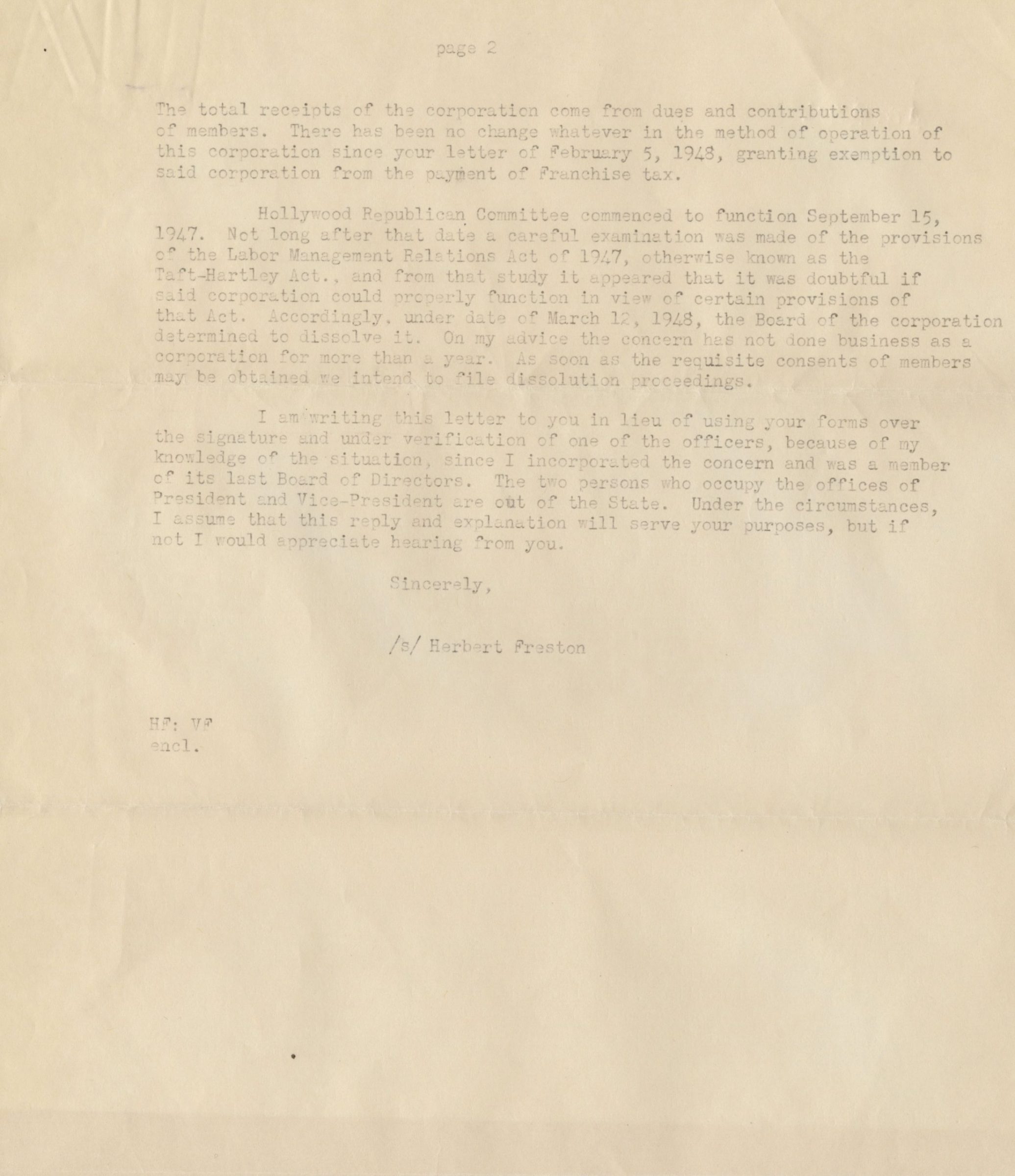In the Golden Age of Hollywood, a Who’s Who, Led by Visionary and Innovator Walt Disney, and Cecil B. DeMille, Founding Father of the American Cinema







The Hollywood Republican Committee reformulates its structure, with the written approval of Walt and Roy Disney, Cecil B. DeMille, George Murphy, Ward Bond, Hoagy Carmichael, Hedda Hopper, and Adolph Menjou, among others
Hollywood has always been political. Though many people associate Hollywood notables as primarily Democrats, that has not historically been the case. In 1939, along with fellow dancers Fred Astaire and Ginger Rogers, George Murphy founded the Hollywood Republican Committee to “combat the general belief that all Hollywood actors and writers were left...
Hollywood has always been political. Though many people associate Hollywood notables as primarily Democrats, that has not historically been the case. In 1939, along with fellow dancers Fred Astaire and Ginger Rogers, George Murphy founded the Hollywood Republican Committee to “combat the general belief that all Hollywood actors and writers were left wing.” He became a leader of Hollywood’s conservative bloc, a group that also included a young actor named Ronald Reagan. In fact, it was Murphy more than anyone else who paved the way for Reagan’s successful transition from Hollywood actor to national politician. Murphy in time went to the U.S. Senate.
The committee was founded as a corporation, but after an adverse ruling by the franchise tax board, its accountants and attorneys suggested that the corporation be dissolved, and the entity operate as an unincorporated committee. To do this, Murphy needed the consent of committee members. He sent them a letter on Hollywood Republican Committee letterhead explaining the matter, along with a copy of the letter their attorney sent the tax board, and the legal document they would need to sign to allow the change to proceed.
The document is entitled “Written Consent of Members of the Hollywood Republican Committee, a California non-profit corporation, to Voluntary Dissolution”. Its date is March 1948. It recites: “Now, Therefore, the undersigned members of said corporation, and constituting more than fifty percent of the members of said corporation, do hereby elect to wind up the affairs of said corporation and voluntarily dissolve it, and the undersigned do hereby consent to the winding up of the affairs of said corporation and to its voluntary dissolution.”
Signing this were about 100 of the members. They constitute a who’s who of Hollywood at that time. Here are some of the main signatories, who include actors, film executives, directors, businesspeople, lawyers, and the like. The group is led by visionary Walt Disney, with his brother Roy Disney and Disney lawyer Gunther Lessing. Following are Cecil B. DeMille, George Murphy, Helen Rose, Ward Bond, Hedda Hopper, Adolph Menjou, Buddy Adler, Hoagy Carmichael, Charles Coburn, Morrie Ryskind, Jean Hersholt, Charles Brackett as well other Hollywood figures. There are some 100 signatory
This is an extraordinary and unique variety of important Hollywood signatures, all on a type of politically-related document we’ve not seen before on the market. Especially rare is the combination of Walt Disney, innovator of films, animation, theme parks, and entertainment generally, with Cecil B. DeMille, founding father of the American cinema and the most commercially successful producer-director in film history.

Frame, Display, Preserve
Each frame is custom constructed, using only proper museum archival materials. This includes:The finest frames, tailored to match the document you have chosen. These can period style, antiqued, gilded, wood, etc. Fabric mats, including silk and satin, as well as museum mat board with hand painted bevels. Attachment of the document to the matting to ensure its protection. This "hinging" is done according to archival standards. Protective "glass," or Tru Vue Optium Acrylic glazing, which is shatter resistant, 99% UV protective, and anti-reflective. You benefit from our decades of experience in designing and creating beautiful, compelling, and protective framed historical documents.
Learn more about our Framing Services
















































































































